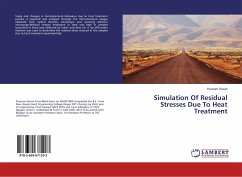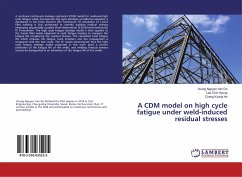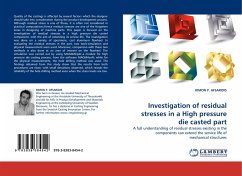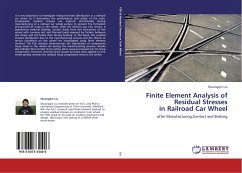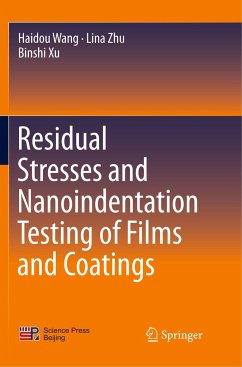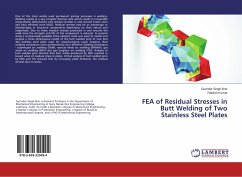
FEA of Residual Stresses in Butt Welding of Two Stainless Steel Plates
Versandkostenfrei!
Versandfertig in 6-10 Tagen
32,99 €
inkl. MwSt.

PAYBACK Punkte
16 °P sammeln!
One of the most widely used permanent joining processes is welding. Welding results in a very complex thermal cycle which results in irreversible elastic-plastic deformation and residual stresses in and around fusion zone and heat affected zone (HAZ). Residual stresses may be an advantage or disadvantage in structural components depending on their nature and magnitude. Due to these residual stresses produced in and around the weld zone the strength and life of the component is reduced. In present study a commercially available finite element code was used to model and analyze a three dimension...
One of the most widely used permanent joining processes is welding. Welding results in a very complex thermal cycle which results in irreversible elastic-plastic deformation and residual stresses in and around fusion zone and heat affected zone (HAZ). Residual stresses may be an advantage or disadvantage in structural components depending on their nature and magnitude. Due to these residual stresses produced in and around the weld zone the strength and life of the component is reduced. In present study a commercially available finite element code was used to model and analyze a three dimensional model of the butt welded joint of two AISI 304 stainless steel plate used for manufacturing sugar hoppers. Butt welding simulations were performed by four different welding techniques - submerged arc welding (SAW), manual metal arc welding (MMAW), gas metal arc welding (MIG) and gas tungsten arc welding (TIG). Analysis of butt welded joint showed that butt welds produced by MIG resulted in lowest value of residual stress in plates. Critical analysis of butt welded joint by MIG and TIG showed that by increasing plate thickness, the residual stresses also increases.




